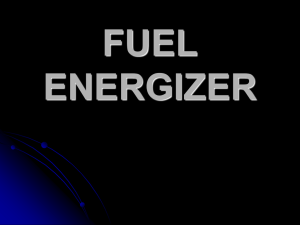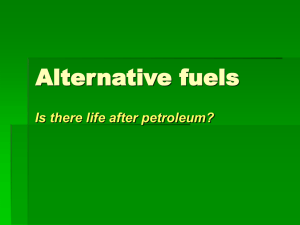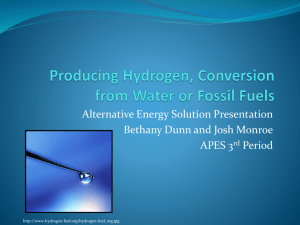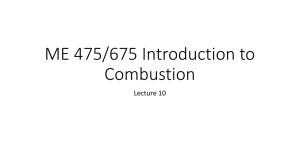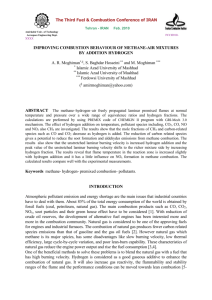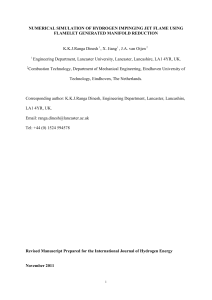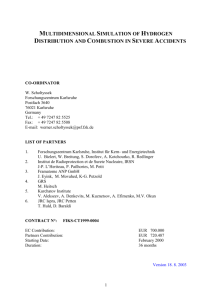cfd-simulation-of-hydrogen-combustion
advertisement
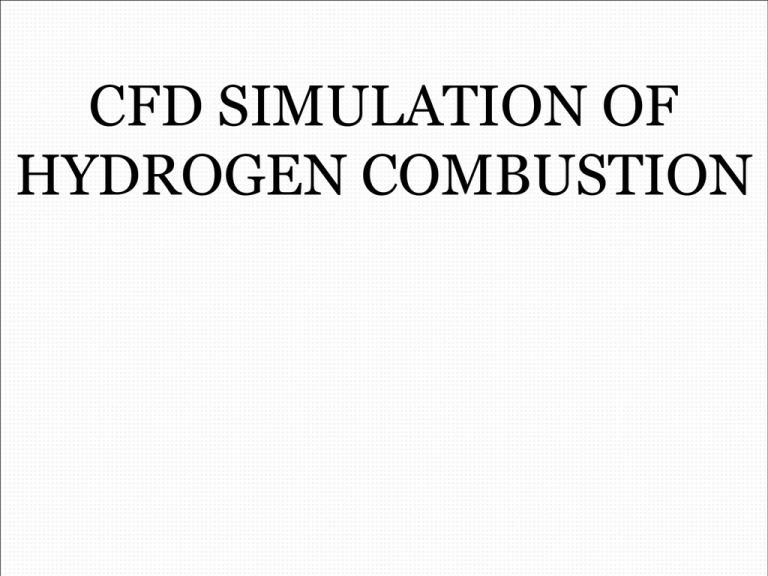
CFD SIMULATION OF HYDROGEN COMBUSTION INTRODUCTION Hydrogen as alternative fuel Evaluation of Hydrogen combustion using CFD OBJECTIVES AND SCOPE Understanding of the basics of Hydrogenoxygen reaction mechanism. To develop a two dimensional numerical mesh and flow model. To prepare a mathematical model for hydrogenair combustion system. The objective of this is to study CFD-package FLUENT. HYDROGEN AS A FUEL It readily combines with oxygen to form water. It has a high-energy content per weight. Hydrogen is highly flammable. Hydrogen burns with a pale-blue, almostinvisible flame. The combustion of hydrogen does not produce carbon dioxide (CO2), particulate, or sulfur emissions. Hydrogen can be produced from renewable resources. Table : Properties of fuels PROPERTIES OF HYDROGEN AS A FUEL Limits of Flammability Minimum Ignition Energy Quenching Gap or Distance Self Ignition Temperature Flame Speed Diffusivity Density Flame characteristics Figure : Invisible Hydrogen Flame Igniting Broom Figure : Hydrogen Flame from Ruptured Fuel Cylinder BENEFITS OF HYDROGEN ECONOMY Strengthen National Energy Security Reduce Greenhouse Gas Emissions Reduce Air Pollution Improve Energy Efficiency HYDROGEN STORAGE AND DELIVERY Compressed Gas and Cryogenic Liquid Storage Materials-based Hydrogen Storage Current Technology COMBUSTION Combustion accounts for approximately 85% of the worlds energy usage. Eg: Gas turbine and jet engine. Rocket propulsion. Piston engines. Combustion is a complex interaction of physical and chemical processes. The general characteristics of combustion: The first and second limits are ones that correspond to conditions of very low pressures . As the pressure increases, the initial densities of the reactants increase and a lower temperature is necessary for the reactions to become fast enough for explosion. Hydrogen Combustion GRID GENERATION AND MATHEMATICAL MODELING Model geometry Grid Generation MATHEMATICAL MODELLING Continuity Equation Momentum Equations Boundary conditions • Inlet temperature of hydrogen and air =300 k • velocity 90 m/s • Exit a pressure =101325.0 Pa CFD SIMULATION A number of numerical simulations have been performed to study the combustion phenomena under adiabatic wall conditions when hydrogen air mixture changes from lean to rich and also at different mass flow rate of mixture. Figure. shows the contours of temperature (K) on the cross section along central axis of combustion chamber at stoichiometric air fuel ratio i.e. at Ф=1. Figure : Temperature Contours at Ф=1 Figure : Contours of Mole fraction of h2O Figure : Contours of Mole fraction of N2 Figure : Contours of Mole fraction of O2 Figure : Contours of Mole fraction of H2 Figure : Contours of Mole fraction of OH Figure : Contours of Mole fraction of O CONCLUSION • CFD based combustion simulations have been done. • The combustor performance is evaluated by predicting the temperatures of exit gas of the combustor and outer wall of the combustor.
